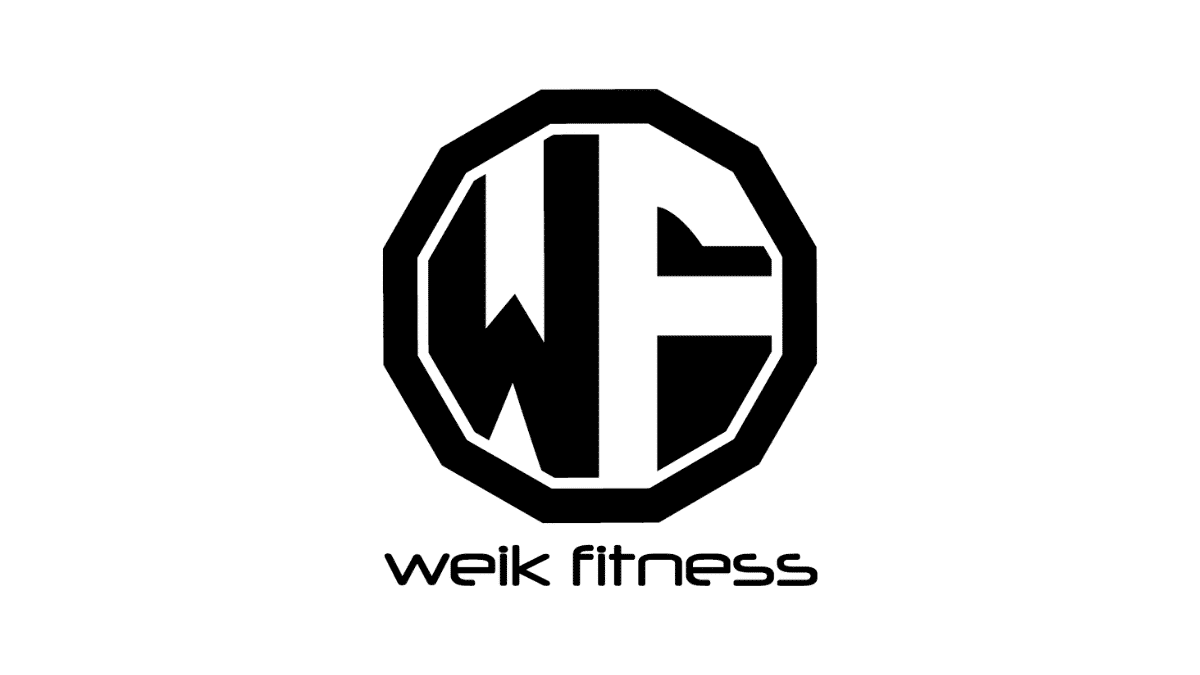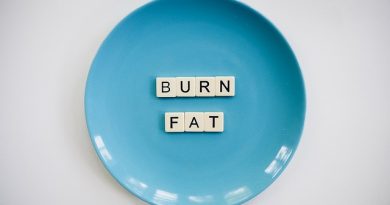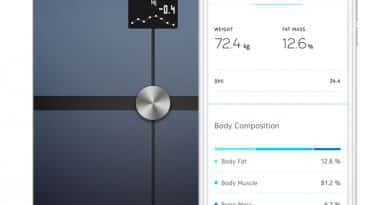Beyond the Scale: The Science and Art of Body Recomposition
Have you ever found yourself spinning your wheels, working out and dieting, only to see the number on the scale bounce up and down like you’re watching a yo-yo on your finger? You’re not alone! If you’re like most people, you can put in the work, but your body shape frustratingly refuses to change. Perhaps it’s time to try something a little different, like focusing on body recomposition.
It’s a common stumbling block for many devoted to their health and fitness goals — the point where weight loss seems possible but that coveted muscle definition and tone remain elusive.
And yes, we understand how hitting this plateau can feel like banging your head against a wall; no matter how hard you push, visible progress just doesn’t seem to come.
Related Article: Must You Train to Failure to Experience Muscular Hypertrophy?
This is why we’re diving deep into the concept of body recomposition. It’s an approach that goes beyond traditional weight loss methods, offering a scientifically sound strategy focused on sculpting your physique by converting fat into muscle.
What you’ll find in this article is a calculated fusion of nutrition insights and smart workout plans curated specifically for transforming your physique. We’re excited about sharing this information with you because they can crack open new possibilities in shaping your body with discipline and expertise.
So, if you’re ready for a shift in perspective, and willing to embrace some hard work mixed with savvy science, let’s jump into reimagining what it means to truly transform your body composition.
Table of contents

Disclaimer: This article is for informational purposes only. It is recommended that you speak with your doctor before starting any exercise program, making changes to your daily nutrition, or adding any supplements to your current regimen.
Key Takeaways
- Body recomposition means losing fat and gaining muscle at the same time. It’s done by eating slightly fewer calories and getting enough protein while doing resistance training.
- Nutrition is super important for changing your body. You need to eat a lot of protein and manage how many calories you take in. Plus, lifting weights helps build muscle, which can burn more calories even when you’re not working out.
- To lose fat, create a calorie deficit by eating less energy than your body needs. High-protein foods help keep muscles during this process. For muscle gain, do tough workouts that challenge your muscles over time, and eat plenty of protein to help them grow.
- Instead of going through bulking or cutting phases, which have downsides, focus on slowly adjusting food intake while doing strength training. This helps improve how much you can lift compared to your weight without adding lots of fat.
- Remember, it takes patience and consistency with both food and exercise to change the way your body looks. Make choices that fit with your life so you can keep up with these habits in the long run.
Understanding Body Recomposition to Lose Fat and Gain Muscle
Body recomposition is the process of simultaneously losing body fat and gaining muscle mass, resulting in a change in body composition. It involves both the science and art of strategically managing nutrition, exercise, and recovery to achieve desired physical changes.
Definition of body recomposition
Body recomposition is our process of shaping up by losing fat and building muscle at the same time. It’s like sculpting the body — we chip away unwanted fat while adding lean, strong muscle.
Think of it as a dual focus: we cut calories just enough to lose body fat but eat enough protein and train effectively to gain muscle mass.
We manage our calorie intake carefully, ensuring we’re in a slight deficit to shed the excess body fat. Meanwhile, resistance training becomes our best ally, promoting muscle growth even as we slim down.
This balancing act transforms how we look and feel without fixating solely on what the scale says.
The science and art behind changing body composition
We understand that losing fat and building muscle can feel like two separate battles. Yet, the process of body recomposition flips this idea on its head. It’s about striking a balance: creating a calorie deficit for fat loss while eating enough protein to support muscle growth.
Think of it as fine-tuning your diet and workout plan to achieve both goals at once. We don’t just aim for a lower number on the scale; our focus is sculpting lean body mass while shedding unwanted fat.
Related Article: Better Body Composition with Probiotics?
Mastering the art of body recomposition requires patience and precision. Resistance training isn’t just lifting weights; it’s an intricate dance guided by progressive overload to challenge our muscles into growth — muscle hypertrophy, in scientific terms — and we’re all about that progress! Couple this with rest-pause techniques, and these methods are game-changers in ensuring each exercise session maximizes muscle gain without wasting energy or time.
Our bodies become efficient machines, using nutrients effectively while preserving every ounce of hard-earned muscle tissue during fat loss phases — we make every rep count!
My personal experience focusing on body recomposition
Back in the day, when I was doing a body recomposition or “body recomp,” there wasn’t a guide to body recomposition that we were to follow — it was more trial and error, which was fine. If you want to lose weight, this will help. If you want to gain muscle, this will help. The issue with many programs is that most will only jump on a scale and get their total body weight. This doesn’t take into account your lean muscle mass or your actual body fat percentage, as it’s simply a number on a scale. It’s the same as going by your body mass index or BMI, as that simply looks at your height and overall weight.

The amount of muscle you have will throw the numbers off when checking your weight and BMI, which is why getting your body fat measured is important to look at your overall body composition. Measure your body and get your inches so that you can look at how things are progressing when doing a body recomposition. One thing to take note of (and I’ll touch on later in this article) is the importance of your nutrition when trying to improve your body composition. How many calories per day that you’re taking in, and what makes up those calories (the macros) play a vital role in the success or failure you see.
Related Article: Health Scale — Will Health Be More Important Than Money?
I want everyone to have a positive body image, and that can only take place when you push yourself and force change. If having a great physique were easy, over 70% of American adults wouldn’t be overweight. You need to learn how to build muscle without gaining body fat and then putting the shoe on the other foot, you need to learn how to burn fat without losing lean muscle mass. This is all a balancing act when going through a body transformation.
Putting all the puzzle pieces together from experience, I want to help you with your body recomposition training and get you the best results by taking body fat and using it as a fuel source. Changing your body composition isn’t going to be easy — I want you to understand that right from the rip. Body composition changes day to day where some days you feel great about your progress, and others you start wondering if you’re going in the right direction. The key is to keep going.
How to Achieve Body Recomposition to Build Muscle and Lose Fat

To achieve body recomposition, focus on a combination of losing fat and gaining muscle. This can be achieved through proper nutrition, including adequate protein intake, and a well-structured exercise program that includes both strength training and cardiovascular workouts.
Tips to lose body fat
We all want to shed unwanted fat. Here’s how you can make it happen while keeping your muscles strong and healthy.
- Eat fewer calories than your body uses each day. This creates a calorie deficit that helps burn fat.
- Choose foods high in protein for every meal. Protein supports muscle while you lose fat.
- Include vegetables and fruits in your diet. They are full of nutrients and have few calories.
- Drink plenty of water throughout the day. It keeps you full and hydrated.
- Avoid sugary drinks and snacks. These add extra calories without good nutrition.
- Get enough sleep every night. Proper rest helps regulate hunger hormones and repair muscles.
- Use weight training exercises regularly. Lifting weights increases muscle mass, which boosts metabolism.
- Do some cardio workouts each week, too. Activities like running or cycling burn a lot of calories fast.
- Keep track of what you eat with a food journal or app. Being aware helps you make better choices.
- Be patient with yourself; losing fat takes time, but is definitely possible!
Tips to gain muscle mass
To gain muscle effectively, it is essential to focus on progressive resistance training and consume a high-protein diet. Here are some tips to help with your muscle-building journey:
- Engage in compound exercises such as squats, deadlifts, and bench presses to target multiple muscle groups simultaneously.
- Incorporate progressive overload by gradually increasing the weight or intensity of your workouts to stimulate muscle growth.
- Consume a sufficient amount of protein, aiming for at least 1 gram per pound of body weight, to support muscle repair and growth.
- Ensure adequate rest and recovery between workout sessions to allow muscles to heal and strengthen.
- Implement proper hydration and nutrition to support overall muscle health and performance.
- Consider incorporating targeted supplementation, such as creatine or branched-chain amino acids, to enhance muscle-building potential.
Importance of resistance training and your diet to eat for body recomposition
Nutrition and exercise play a crucial role in achieving body recomposition. It’s essential to consume an adequate amount of protein to support muscle growth and repair while also managing calorie intake to facilitate fat loss.
High-protein diets can aid in preserving lean muscle mass during the fat-loss process, and it’s vital to focus on nutrient-dense foods for overall health and performance. Moreover, regular resistance training exercises are instrumental in building muscle and increasing metabolism, contributing significantly to the body recomposition journey.

Engaging in consistent physical activity not only promotes fat loss but also supports overall well-being by enhancing cardiovascular health, boosting metabolism, and improving mood.
Related Article: Gain Muscle and Lose Fat at the Same Time?
Additionally, combining strength-training exercises with cardio activities can help achieve a balanced approach to body recomposition by addressing both fat loss and muscle gain simultaneously.
Benefits of Body Recomposition
Achieving body recomposition can lead to an improved strength-to-weight ratio, helping individuals perform better in their chosen physical activities. It also allows for the avoidance of the side effects commonly associated with traditional bulking and cutting cycles.
However, it’s important to consider that body recomposition requires dedication and consistency in both nutrition and exercise.
1. Improved strength-to-weight ratio
Improving strength-to-weight ratio is a key benefit of body recomposition. By gaining muscle and losing fat simultaneously, individuals can enhance their physical performance without necessarily increasing overall body weight.
This is particularly advantageous for athletes as it allows them to generate more power and agility while maintaining or even reducing the load on their joints and ligaments. Focusing on building lean muscle mass not only boosts metabolism but also contributes to better functional strength, making everyday tasks easier and enhancing overall athleticism.
The increased strength-to-weight ratio achieved through body recomposition brings about significant improvements in physical capabilities, from endurance and flexibility to explosive power.
2. Avoiding side effects of bulking and cutting
To achieve body recomposition and avoid the side effects of bulking and cutting, we need to focus on a balanced approach. It’s essential to gradually adjust calorie intake rather than resorting to extreme deficits or surpluses, which can lead to metabolic slowdown or excessive fat gain.
By incorporating resistance training, particularly weightlifting, we can stimulate muscle growth while minimizing potential muscle loss during fat reduction. Prioritizing protein intake is crucial for supporting muscle recovery and growth, as well as preserving lean mass while reducing body fat percentage.
Emphasizing nutrient-dense foods such as lean proteins, fruits, vegetables, and whole grains can support overall health while promoting sustainable changes in body composition.
3. Important factors to consider
To achieve successful body recomposition, it’s crucial to prioritize both nutrition and exercise. Balancing calorie intake is key — a slight deficit for losing fat and a surplus for gaining muscle.

High protein consumption supports muscle growth while aiding fat loss. Additionally, resistance training promotes muscle retention during fat loss and stimulates muscle gain when in a caloric surplus. Following your workouts, it is recommended that you use a high-quality protein powder to help kickstart the recovery process. Personally, I really like MuscleSport Lean Whey when I’m doing a body recomp as it not only has the protein I’m looking for, but also a Fat Metabolizing Matrix to help promote weight loss.
Understanding the importance of these elements will be fundamental in achieving simultaneous fat loss and muscle gain.
When embarking on body recomposition, considering long-term sustainability is vital. The chosen plan should align with individual preferences and lifestyles to ensure adherence. Implementing gradual changes that are manageable and sustainable will contribute to long-lasting success.
Body Recomposition Works! You CAN Build Muscle and Burn Fat at the Same Time!
What you just read provides a comprehensive guide to mastering the simultaneous process of losing fat and gaining muscle. It offers practical advice supported by scientifically proven methods, making it an essential resource for anyone seeking body recomposition.
If you want to get the best results possible, use what you found in this article to help with your body recomposition. Stick with it, don’t get frustrated, and keep showing up every day. The results will come if you’re consistent and do everything you’re supposed to.
Body Recomposition FAQs
“Body recomposition” refers to changing your body’s makeup by losing fat and gaining muscle at the same time. It’s a balanced approach to transforming your physique.
Yes, it’s possible! With focused training and a high-protein diet, you can increase muscle while losing unwanted fat mass — it’s about getting the right balance.
To preserve muscle but still burn fat, aim for a slight deficit or maintenance number of calories — enough to fuel workouts but not so much that you gain fat.
Your program will likely include strength training to promote muscle protein synthesis — key for building skeletal muscle — along with some cardio to help burn excess calories.
A great question! Yes, starting out with low levels of body fat helps because your body might use stored fat more as you try to build additional muscularity without gaining weight.
Measure progress by taking results beyond just total body weight — check gains in lean body mass through photos, measurements, or clothes fitting better since these changes mean improved overall composition.


*Disclosure: This article may contain affiliate links or ads, which means we earn a small commission at no extra cost to you if you make a purchase through these links. These commissions help support the operation and maintenance of our website, allowing us to continue producing free valuable content. Your support is genuinely appreciated, whether you choose to use our links or not. Thank you for being a part of our community and enjoying our content.
PLEASE CONSIDER SHARING THIS ON YOUR SOCIAL MEDIA TO HELP OTHERS LEARN MORE ABOUT THIS TOPIC.





